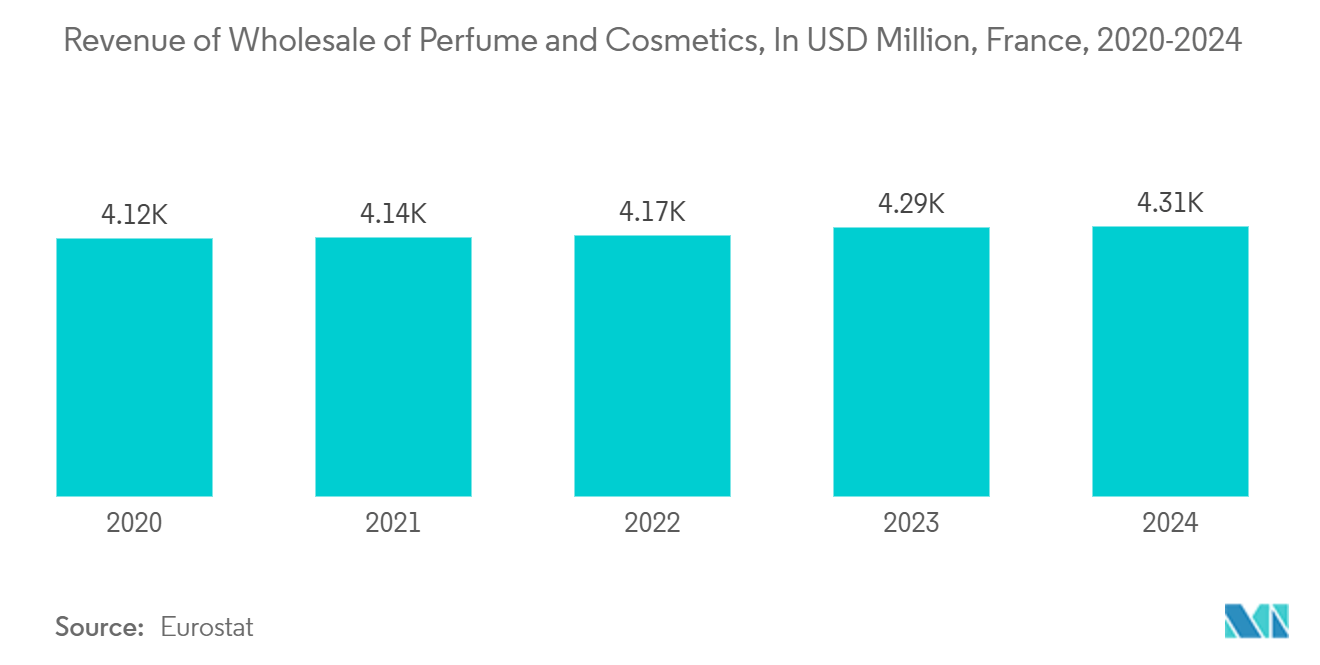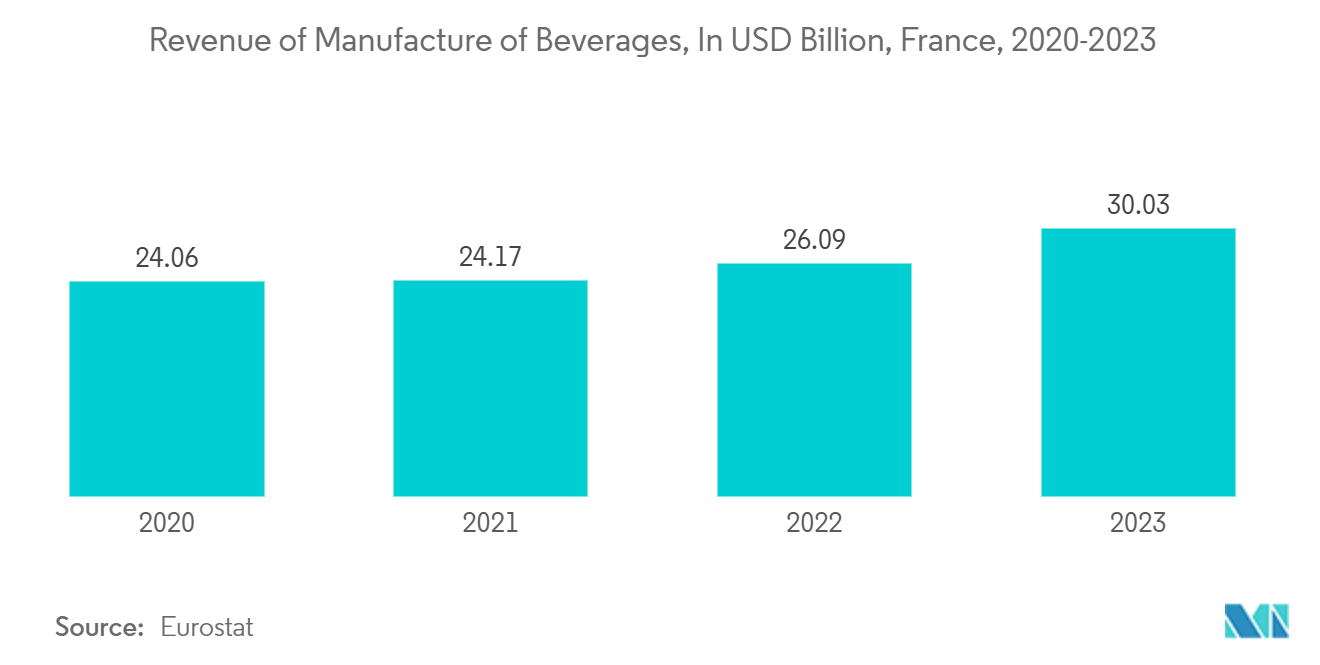Market Trends of France Container Glass Industry
Cosmetics Segment is Expected to Witness Significant Growth
- The French container glass industry is significantly influenced by the cosmetics, personal care products, and luxury perfumes sectors. These sectors are actively promoting recycling and the sustained use of glass containers in their packaging practices.
- In a show of solidarity, the French cosmetics and perfume sector has taken steps to bolster the glass industry. A group of 12 companies from the beauty sector has collectively signed a declaration, underscoring their commitment to prioritize suppliers from France. This coalition features major players in the beauty market, all members of the Federation of Beauty Companies (FEBEA), including Biologique Recherche, Chanel, Clarins, Coty, Guerlain, Hermès, Kenzo Parfums, Interparfums, L'Oréal, Parfums Christian Dior, Parfums Givenchy, Puig, Shiseido, Sisley, Sarbec, and Sothys.
- According to data from the Fédération des Entreprises de la beauté (Febea), French cosmetics exports have seen a significant rise. In 2023, these exports grew by 10.8% year-on-year, totaling an impressive EUR 21.3 billion (USD 23.05 billion). The global allure of French cosmetics remains strong. The industry is evolving, placing a premium on sustainability and environmental awareness, in tune with modern consumer demands.
- France, a global hub for beauty and luxury, boasts iconic brands like Chanel, Dior, and L'Oréal, which play a pivotal role in shaping both domestic and international market trends. Eurostat data indicates that the wholesale revenue for perfumes and cosmetics in France was USD 4,121.75 million in 2020, with projections to hit USD 4,310.25 million by 2024.
- As consumers increasingly demand beauty products tailored to their individual skin types and preferences, the market is witnessing a surge in innovation. Brands are not only focusing on eco-friendly packaging and ethically sourced ingredients but are also cultivating brand loyalty by resonating with environmentally-conscious consumers.

Growing Beverage Industry is Expected to Promote Market Growth
- In France, alcoholic beverages, particularly wine, are deeply woven into the cultural fabric. Esteemed wine regions, including Bordeaux and Champagne, are not just geographical locations but are emblematic of the nation's identity and its culinary heritage. France is both a leading producer and a prominent consumer of wine.
- The rising Consumer Price Index (CPI) indicates that consumers are increasingly valuing alcohol-free drinks, willing to pay a premium for them. Packaging these beverages in glass bottles can further elevate their perceived worth, as glass is synonymous with premium quality and enhances the product's overall presentation. Data from the National Institute of Statistics and Economic Studies France reveals that the CPI for alcohol-free drinks was 114.32 at the close of 2022, climbing to 123.39 by July 2023.
- France is also diversifying its beverage manufacturing. Eurostat reports that beverage manufacturing revenue in France was USD 24.06 billion in 2020, with projections to hit USD 30.03 billion by 2023. Additionally, there's a noticeable shift in consumer behavior towards moderation and health, leading many to choose low-alcohol or non-alcoholic options.
- Tourism significantly fuels the demand for beverages in France. The nation exports glass packaging products, including containers, to various regions. Data indicates that the export value for glass products surged from USD 724,727 thousand in 2020 to USD 925,225 thousand in 2023.
- Furthermore, with a growing emphasis on health and wellness, there's a rising demand for non-alcoholic beverages such as flavored waters, fruit juices, iced teas, and herbal drinks. The market's innovative spirit is evident with the introduction of functional beverages, like those infused with probiotics, highlighting a trend towards unique flavors and health-centric ingredients.


